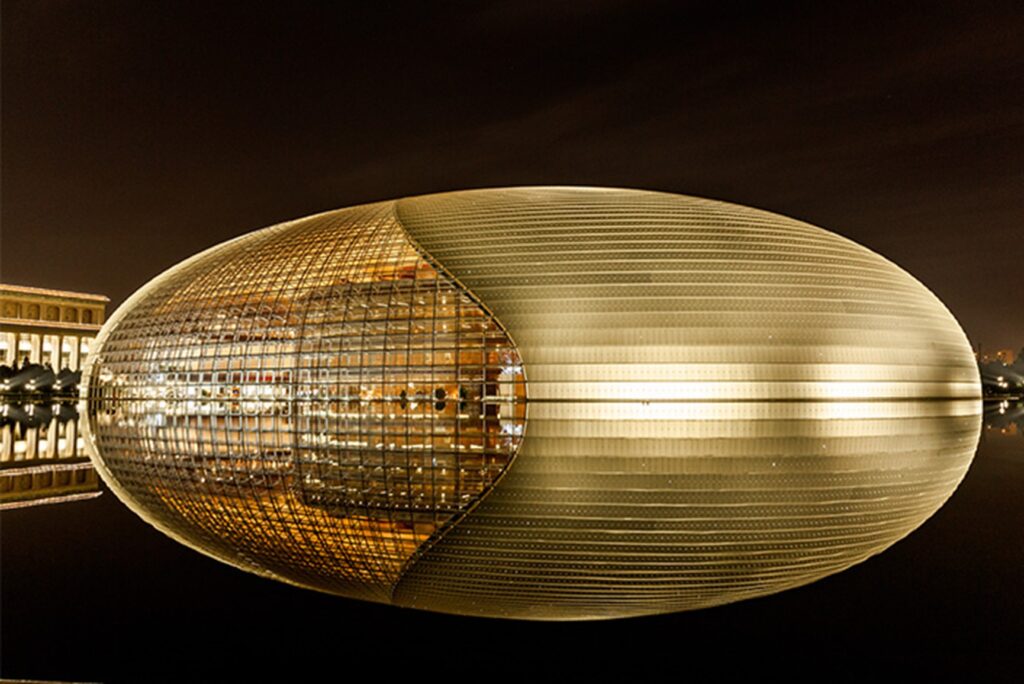With the gradual development of intelligent lighting systems, lamps are no longer limited to the most primitive switch mode. They now increasingly facilitate light dimming and control. This not only saves energy but also creates an atmosphere and can even affect the cost of after-sales maintenance. The commonly used dimming methods include DALI, 0/1-10V, SCR, PWM, DMX, among others. Below, I’ll analyze these methods based on my personal experience in actual architectural lighting projects:

(1) DALI Dimming
DALI (Digital Addressable Lighting Interface) protocol uses digital signals for dimming control. Each luminaire has a unique address, allowing direct communication with components in the lamps and lanterns, achieving intelligent single-lamp control and group control. DALI wiring is simple and flexible, with independent strong and weak power circuits. The control signal line can be up to 300 meters long. The DALI system can adjust lighting from 1% to 100%.
Advantages: It is an intelligent dimming method with precise, smooth dimming, flexible single-lamp control, bidirectional communication, strong anti-interference capability, and fault feedback.
Disadvantages: Additional control lines and controllers are needed, it’s costly, and complex to commission.
Project Application: Focus on three points in actual project applications:
- First Point: If the lighting project already has a specified DALI control system, conduct compatibility testing in advance. There are two versions of DALI: DALI-1 and DALI-2, with the latter being an upgraded version and compatible with DALI-1. It’s best to understand the version of the original DALI control system before conducting compatibility tests and selecting the DALI driver accordingly.
- Second Point: For new projects requiring the purchase of control systems and lamps, it’s recommended to choose a compatible version for both, like either DALI-1 or DALI-2, to ensure compatibility. Although theoretically compatible, final prototyping tests are essential. Sometimes, issues like improper operation during testing can interfere with results, so standardized testing methods and thorough reviews are necessary.
- Third Point: In large projects with various dimming lamps, including different power sizes, it might be necessary to mix brands of DALI drivers. Choose the same version for drivers and conduct compatibility testing with the same console to ensure accuracy.
In short, due to DALI dimming’s high overall implementation cost, conducting thorough compatibility testing in the early stages is crucial to prevent quality issues in large volumes.

(2) 0/1-10V Dimming
There are two types: 0-10V and 1-10V. Both types dim by receiving a 0/1-10V analog signal to control the LED’s average current, mainly through PWM waveform control. For 1-10V dimmers, adjusting the dimmer to a minimum of 1V reduces the output current to 10%, and adjusting it to a maximum of 10V increases the output to 100% of the power supply output, achieving 100% brightness. Note that 1-10V dimmers do not have an on/off function.
Advantages: Common, simple application, good compatibility, high precision, effective dimming, cost-effective.
Disadvantages: Cumbersome wiring, additional control wiring and controllers needed.
Project Application: This method has high compatibility and a wide application range, from indoor to outdoor lamps. Confirm with users whether a complete shutdown (0-10V) or non-shutdown (1-10V) program is needed before production. Misunderstandings about user requirements can lead to significant rectification costs.

(3) SCR Dimming
The principle of SCR dimming involves using SCR devices as switching devices, chopping the input voltage of AC power from 0 degrees phase until SCR conduction voltage input. This method adjusts the AC power’s half-wave conduction angle to change the sinusoidal waveform, altering the AC current’s RMS value to dim the light.
Advantages: Easy wiring, low cost.
Disadvantages: Low adaptability, low compatibility.
Project Application: SCR dimming is widely used in traditional light source lamps. In projects like old renovations (conference halls, churches), where the aim is to replace traditional metal halide sources with LED sources but retain the original dimming control system, it’s crucial to understand the existing system and choose compatible SCR dimming drives. Different manufacturers’ drives have varied compatibility, so it’s important to test them with the original system and light source to ensure compatibility before ordering production.

(4) PWM Dimming
The principle of PWM (Pulse Width Modulation) dimming involves controlling the on-off cycle of the inverter circuit’s switching device. This control generates a series of pulses with equal amplitude, which replace the sinusoidal waveform or the desired waveform. By adjusting the pulse width, i.e., by changing the ratio of the on and off times, the average voltage value is altered, thus enabling brightness adjustment.
Advantages: Simple structure, no color shift issues, energy-efficient, and low heat generation.
Disadvantages: The main issue is stroboscopic flickering, which becomes apparent during video recording.
Project Application: Currently, the application of the PWM dimming method in LED lighting projects is less frequent.

(5) DMX Dimming
The DMX modulator, standing for Dynamic Mode Modulator (or Dynamic Mode Modulation), can connect up to 512 channels. It is a digital transmission dimming device with 512 dimming channels. The DMX modulator uses integrated circuit chips to process control signals like brightness, contrast, and chroma separately. By adjusting the digital potentiometer, it changes the analog output level, thus controlling the brightness and hue of the video signal. The DMX control system can divide the light level from 0 to 100% into 256 levels, achieving full-color control with 256 shades of red, green, and blue (RGB).
Advantage: Professional dimming method with a powerful control function, ideal for architectural lighting, night scene lighting, studio settings, and comprehensive art stages.
Disadvantages: Requires specific wiring layouts and programming, and is more costly.
Project Application: DMX control mode is commonly used in landscape lighting projects, especially DMX512. It’s advantageous for full-color LED systems. For example, with ordinary RGB lighting, a failure in one lamp does not affect subsequent lamps in the DMX512 controlled system. This reliability is crucial for large-scale lighting projects, as it saves time and costs in after-sales maintenance and minimizes negative impact on users.

In conclusion, for specific architectural lighting projects, the dimming control system chosen by the customer is an important factor in selecting the dimming power supply. Whether the project is new or requires continuation of an old control system, or if it’s customer-specified, the selection of dimming method and power type depends on system compatibility. Before finalizing the choice, compatibility tests between the system and the drive should be conducted, including a full power test if possible. Passing these tests is crucial before finalizing the dimming power supply choice. This is critical, as compatibility issues can be challenging to remedy later and may lead to significant losses for the user and impact on the supplier.
The above analysis is based on personal insights into commonly used architectural lighting project dimming methods. In addition to functionality, the final choice of dimming program should be based on the project’s specific needs, installation conditions, lamp selection, and a range of power supply voltage and current options. A comprehensive consideration of these factors will guide the final lighting program choice. Any problem or interesting, please fee free to contact Solutionproled.com






